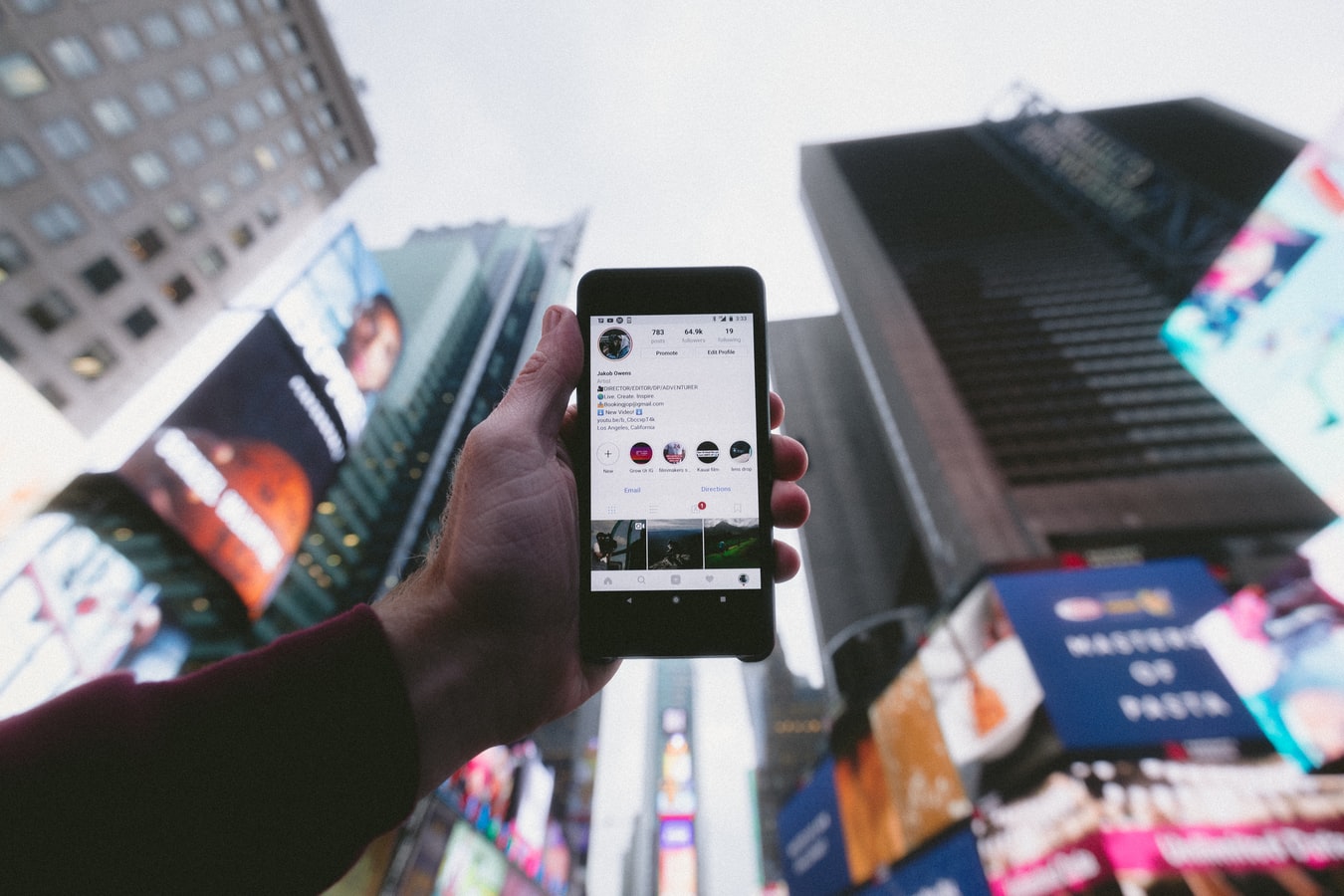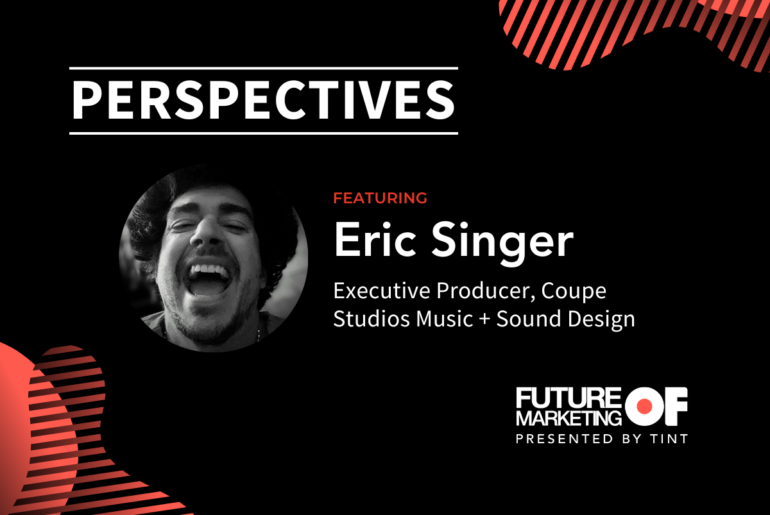Brands are facing immense pressure to be on every platform. This pressure comes from the success of other companies who are successfully executing an omnichannel presence and the fear that their main platform will stop being trendy and they’ll lose their audience.
Put simply:
- Brands want to increase their conversions by introducing themselves to new markets on different platforms
- Brands are smart enough to know not to put their eggs in one social media basket
This is why the omnichannel approach is trending and marketers are taking it more seriously than ever. While more conversions is an easy argument for becoming an omnichannel brand—the fear of losing an audience you’ve invested tens of thousands of dollars to build through paid ads and your social media team can’t be ignored.
When President Trump announced that TikTok would be banned from the United States as long as its parent company remained China-based Byte Dance, brands who’d invested heavily in their TikTok presence were suddenly scrambling to move those followers over to their other platforms.
Most brands are highly aware of the safety net that being omnichannel gives them, and we assume you’re looking at that safety net and wanting to have one of your own.
Let’s take a look at what an omnichannel brand looks like, strategies for being omnichannel, and some more examples for you to get inspiration from.
What is Omnichannel?
Omnichannel is a marketing strategy that uses several channels (different social media platforms, devices, online stores, brick-and-mortar stores, etc.) to increase the number of touchpoints with their customer. By increasing their touchpoints, they can improve sales and build a stronger relationship with their customers.
It can take between 28-62 touchpoints to make a sale. If marketers can increase the number of times their customer sees their products, copy, and content, they can get closer to making the final sale. Only having an Instagram presence restricts them to only communicate with their customer avatar when that avatar is scrolling Instagram. By being omnichannel, marketers can have touchpoints on Instagram, TikTok, email, billboards, and brick-and-mortar stores (for example).
Jameson Whiskey has an omnichannel approach to create more touchpoints between their customer avatar and their new Jameson Cold Brew Coffee and Whiskey. They’re promoting their new whiskey on Twitter through a paid ad:
And, they’re promoting the same whiskey through organic posts on their Instagram feed:
Using this omnichannel strategy, they’re able to increase their touchpoints with their customer avatar. A Jameson fan can see their sponsored tweet while scrolling through Twitter and bump into their Instagram post when the fan switches social platforms.
Jameson can then send liquor stores creative, decorative shelving that makes their Jameson Cold Brew get more attention than it would by just being on a shelf. Jameson now has three channels promoting their new Cold Brew Whiskey—add in a billboard, and they’ve mastered the omnichannel approach.
Being omnichannel will get a lot more eyes on your products, but it wouldn’t be fair to act like it doesn’t come without a cost. If you’re increasing the amount of graphics and copy needed to promote a product because you need Instagram posts, tweets, brick-and-mortar signs, billboards, etc.—is it going to be worth it?
Let’s take a look at the data, then look at a way to avoid paying more in content production (despite increasing the number of channels you’re creating content for).
Why is an Omnichannel Strategy Important?
An omnichannel strategy can achieve 91% greater year-over-year customer retention rates than brands that don’t have an omnichannel approach. The key to understanding why an omnichannel strategy works is looking at how any relationship works.
The more time you spend with somebody, the faster that relationship grows. The more times a brand can get a touchpoint with their customer avatar, the faster that relationship progresses. Better yet—customers are in favor of progressing that relationship.
According to Zendesk, 87% of customers think brands need to put more effort into providing a seamless experience and 90% of customers expect consistent interactions across channels. Customers have new expectations for how they interact with brands, and this data shows us that they want an omnichannel approach.
Customers are okay with having mobile, desktop, and in-person interactions with brands because that’s how they’ve become accustomed to shopping.
- Fifty-six percent of consumers have used their mobile device to research products at home
- Thirty-eight percent have used their mobile device to check inventory availability while on their way to a store
- Thirty-four percent have used their mobile device to research products while in a store
As customers of brands ourselves, we’ve learned how to blend our virtual and physical worlds to create the most efficient shopping experience. The brands that support that blend and create a seamless experience are the ones that create the least amount of friction for someone trying to buy their products.
Google found that an omnichannel strategy can increase your customer lifetime value by 30% compared to a single-channel approach.
While an omnichannel approach makes sense, it can seem extremely time-consuming and expensive. Instead of having your marketing team focus on growing your Instagram presence and running paid ads on the platform—you’re going to need to create content for all of your channels.
This can keep brands from adopting an omnichannel strategy and reaping the benefits, but it doesn’t have to. Using user-generated content, you can increase your content output without needing to increase your marketing budget drastically. Your customers will create content for you (for free) and you’ll use their content in your social media posts, emails, billboards, brick-and-mortar stores, and more.
We’ll show you how.
How To Create an Omnichannel Strategy
Your omnichannel strategy is going to need more content that you’ve probably ever created before. You’ll need to create complimentary online and in-store experiences and understandably, that sounds expensive and like a lot of work.
Using an omnichannel user-generated content (UGC) strategy, you can decrease the amount of money you spend creating content even though you’re creating content for more platforms.
UGC is photos, videos, comments, reviews, and testimonials made by customers talking about your products. It’s generally created at 3 points in the post-buying journey:
- When the customer has just bought the product (For example, a tweet talking about their new book purchase)
- When the customer has just received their product (For example, an unboxing video of an ecommerce product)
- When the customer has gotten the results from their product (For example, a before and after photo showing how well a skincare product has been working to reduce acne)
Customers are creating UGC all the time, but most brands don’t have a system set up to find that UGC and organize it to use it in marketing materials in the future. TINT helps brands like AT&T, Nestle, Marriott, and Purdue University collect UGC, curate the best available UGC, and get rights to use it. Instead of creating their own content regularly, these brands can fill their channels with content created by their customers.
UGC also has conversion power.
- When websites feature user-generated content, there’s an increase of 29% web conversions
- Ads based on user-generated content receive 4 times higher click-through rates and a 50% drop in cost-per-click compared to average ads
- Websites with featured user content saw a 20% increase in return visitors and a 90% increase in time spent on-site
Brands are also able to add even more channels to their strategy by using influencer marketing to increase brand awareness. They can utilize nano and micro-influencers (influencers with less than 10,000 followers) to share their products with the influencer’s followers. If a brand is active on 5 channels and utilizes 10 influencers in their marketing strategy, they just created 15 channels and thousands of new touchpoints with their customer avatar.
Again—let’s take a look at the data.
- Ninety-two percent of consumers trust recommendations from other people; even if it’s people they don’t know
- Seventy percent of consumers will consider UGC reviews or ratings before making a purchasing decision
- Forty-one percent will read four to seven UGC reviews to gain important insights on a product
Here’s a great visual of how to create an omnichannel strategy for your brand from Harry Dry from Marketing Examples. Your initial goal is to create value on all of your channels, transfer that value to conversion-friendly channels (like a website), and store the value on the platform you have the most control over (currently, this is email).
A great omnichannel strategy focuses on multiple channels that point customers to the same place. In Harry’s strategy (and the majority of brands), this is his email list. In the case of Jameson Whiskey, they might want to point their customer’s towards brick-and-mortar liquor stores or liquor delivery apps.
To get started with your omnichannel strategy, reverse engineer Harry’s omnichannel strategy above by asking yourself these 3 questions:
- Where does it make the most sense to build my audience (#3: Store Value)
- Where will my audience navigate to where they will be asked to join my email list, follow me, etc. that they will WANT to navigate to? (#2: Transfer Value)
- What channels make the most sense for me to create content on based on my audience? (#1: Create Value)
Here are the top channels you want to consider in your omnichannel strategy:
- eCommerce
- Screens
- Web
- Social
- Paid Search
That’s how to create an omnichannel strategy, and when you use an omnichannel UGC strategy you’ll be able to create content on more channels than you will without one.
Here are some examples of omnichannel strategies.
Examples of Omnichannel Strategies
Marie Forleo uses an omnichannel UGC strategy that spans organic social content, paid ads, and her website (and maybe more that we haven’t stumbled upon yet!).
She has an entire page on her website dedicated to UGC reviews of success stories from her past B-School students.
On her Instagram feed, she posts UGC as an organic post. She posts a photo of a customer reading her book along with their review. Using this omnichannel UGC strategy, Marie can create a lot of content without putting all of her marketing budget towards content creation.
Harry Dry promotes himself on 24 platforms using high-quality content to deliver enough value to get readers to come to his website and subscribe to his email list. Here are the platforms he uses in his omnichannel strategy:
Once a reader reads the entirety of Harry’s article on his website, they find a call to action to subscribe to Harry’s newsletter with UGC reviews from happy subscribers. Harry is a great example of creating an omnichannel UGC strategy that uses both original content and UGC to promote the value of subscribing to his email list.
Four Sigmatic’s omnichannel strategy uses UGC from influencer marketing campaigns to promote their mushroom elixirs on the influencer’s channels (increasing the touchpoints they have with potential customers). Each influence gets their own affiliate link and kickback if somebody makes a purchase using their link.
Here’s Kendra Lee reviewing the Four Sigmatic products, with an affiliate marketing link in the bio of the Youtube video.
Four Sigmatic then uses their Twitter account to retweet UGC reviews from customers, like the one below:
When their customer avatar searches for Four Sigmatic on Google, they’ll bump into reviews from happy customers, including product recommendations.
Creating an omnichannel strategy for your business increases the number of touchpoints you have with your customer avatar. Upgrading that strategy to an omnichannel UGC strategy means that you don’t have to create 3x more content because you added 3 more channels to your marketing funnel. Instead, you can keep adding channels and posting content sustainably to create a seamless buying experience at a lower customer acquisition cost.
Omnichannel marketing is the safety net that can keep a brand thriving, even when the platforms it uses are always making algorithmic changes (or being impacted by outside forces). There might be a lot of pressure for brands to be everywhere right now, but the most forward-thinking brands are going to use user-generated content to succeed across all platforms at the lowest cost possible.
Subscribe to our weekly email on the trends and future of marketing.





